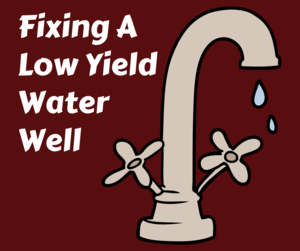CALL TODAY 1-800-441-6281
CALL TODAY 1-800-441-6281

What is Reverse Osmosis and How Does it Work?
Drilling a water well is the first step in having a source of treated drinking water is simply a healthy choice. The second step is testing your water for contaminants. Water testing may reveal the need for a treatment system to deal with various organic and inorganic contaminants that can be present in your drinking water. There are two types of treatment systems available. A “point of entry” system is installed inline with your water main and treats all of your water as it enters the house. A “point of use” system is generally smaller, less costly, used to treat water at a faucet, and is generally more for purifying water for drinking, cooking and sometimes washing.
One common point of use system uses a process known as reverse osmosis. Let’s examine what exactly a reverse osmosis system is and how it works.
What Is Reverse Osmosis?
Reverse osmosis systems force water, under pressure, into a module that contains a semi-permeable membrane and a number of additional filtration steps. The typical RO system has a pre-filter, which is used to trap larger particles, chlorine, and other compounds. The pre-filter then passes through the semi-permeable membrane to further remove contaminants. Finally, an activated charcoal filter removes residual taste, odor, and some organic compounds before the water is finally released into a storage tank that holds the water for future use. Reverse Osmosis systems come with a separate faucet exclusively for dispensing the stored purified water and are typically located in a kitchen, near the main sink.
How Does Reverse Osmosis Work?
The process is called reverse because pressure forces the water flow to reverse in direction from the concentrated solution to the dilute solution, to the flow direction from dilute to concentrated in the process of natural osmosis. RO removes ionized salts, colloids, and organic molecules down to a molecular weight of 100.
RO systems are great for treating water to be used for cooking and consumption. The process of filtration is slow and typical systems produce from 3 to 10 gallons per day. Systems do require some maintenance and you need to regularly replace the unit’s pre-filters, post filters, and membrane modules. Click here to read a comparison of reverse osmosis and filtration systems
Basic RO Components
RO systems are made up of various components including:
Cold water line valve – connects to the cold water line. This is the main line and leads to the RO pre-filter.
Pre-Filter – There may be more than one pre-filter stage. Most common is a sediment filter to remove large particles like sand and grit. Carbon pre-filters are also used to remove chlorine, which can damage the membranes.
RO membrane – the heart of the system, most commonly used is spiral wound.
Post Filter – After the water leaves storage before dispensing it is again run through a filter stage.
Storage Tank – Water is purified and stored in a tank. Typically holds 2.5 gallons and keeps water pressurized in the tank when full.
Faucet – typically an RO filter has a separate faucet for dispensing only RO treated water.
RO systems are affordable and can provide plenty of clean filtered water for the typical family's consumption and cooking needs. For more information on RO and other water treatment options, contact your Skillings and Sons well water professional for more details and to determine if RO is right for you!

